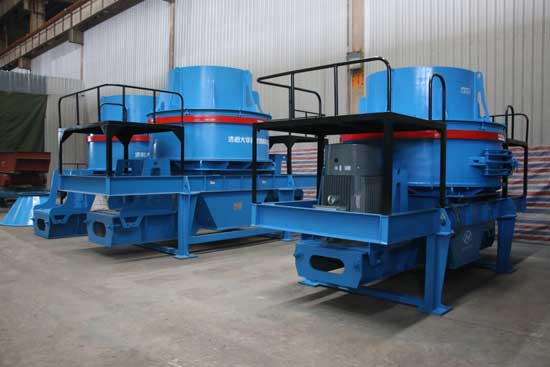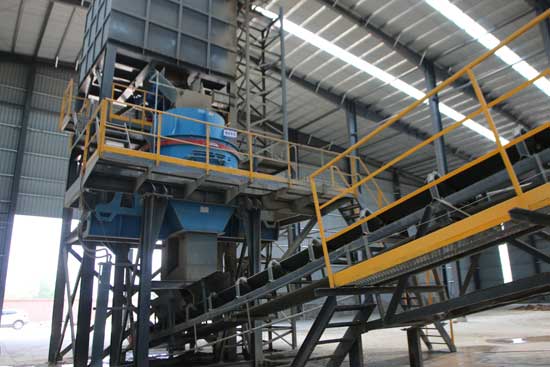Due to the increasingly scarce resources of natural sand, the policy of prohibiting the exploitation of river sand has been continuously introduced. With the passage of time, artificially processed sand has appeared, and sand making machines have been used more and more widely as equipment for producing and processing sand. At present, there are many types of sand making machines in the industry, and their working principles are different, which directly affects the output of sand making machines and is related to the investment efficiency of customers. Next we will specifically introduce the five crushing methods and working principles of the next two sand making machines.

The crushing and feeding methods of the vertical impact sand making machine are: "stone beat stone", "stone beat iron", "full center feeding", "central feeding accompanied by waterfall feeding".
1. The principle of "stone beat iron" with central feeding and waterfall feeding:
The basic working principle is the same as the "stone beat stone" feeding with the waterfall. The difference is that when "stone beat stone", the impact protection plate is installed in the crushing cavity. The material forms a lining around it, and the material impacts the material lining and is broken. As the perimeter guard plate, the material directly impacts the perimeter guard board and is broken.
2. The central feeding is accompanied by the waterfall feeding "stone beat stone" principle:
The material enters the sand making machine through the feeding hopper, falls on the material distribution tray through the bulk material cone, and is divided into two parts. One part enters the high-speed spinning wheel from the middle of the distribution tray, is rapidly accelerated in the wheel, and then is ejected from the wheel runner at high speed. These materials are first crushed and crushed with another part of the material falling around the dividing tray, and then impact the material lining of the crushing cavity together. After being rebounded, they are impacted obliquely upward to the top of the crushing cavity. The emitted material forms a continuous material curtain. In this way, a piece of material is crushed in the crushing cavity by multiple impacts, friction and grinding.

3. The principle of "centrally feeding":
The material enters the crusher rotor through the feeding hopper, and the high-speed rotating rotor ejects the material. The ejected material hits the surrounding guard plate and is crushed. The crushed material leaves the crushing cavity and enters the lower casing unloading hopper under the action of gravity.
4. The principle of "center stone feeding":
The material enters the crusher rotor through the feeding hopper. The high-speed rotating rotor ejects the material. The ejected material hits the baffle and bounces. When it falls, it collides with the material ejected from the rotor. It is crushed by impact, friction, and the crushed material leaves the crushing chamber under the action of gravity and enters the unloading hopper of the lower casing.
Under normal circumstances, the whole center feed is mainly "stone beat iron", which is generally used to make sand, and the output is low; while the center feeding is accompanied by the waterfall, the feed is "stone beat iron" and "stone beat stone", which is generally used To shape, the yield is higher.
"Stone beat stone" crushing method is suitable for materials with high abrasiveness above medium hardness, such as basalt. During the crushing process, the material ejected from the swing wheel and the material lining do not directly contact the metal elements of the equipment, which reduces the iron consumption, thereby reducing the maintenance time. The finished product has good grain shape under the condition of "stone hitting stone".
"Stone beat iron" crushing method is suitable for materials with low abrasiveness below medium hard, such as limestone. The crushing efficiency is higher under the condition of "stone hitting iron".

